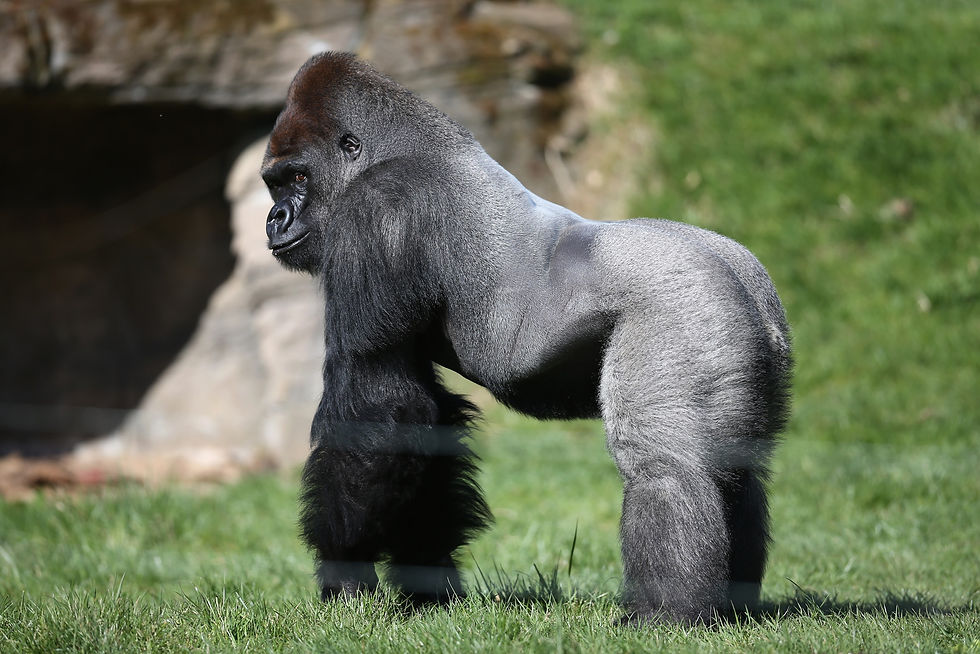What was gorilla Harambe Thinking?
- Lora Leon
- Jun 2, 2016
- 3 min read

We have been hearing a great deal of coverage regarding the tragic incident this past week at the Cincinnati Zoo, where a young boy fell (or climbed?) into the Gorilla habitat. The prominent male of the troop of gorillas at the Cincinnati Zoo was 17 year old Harambe, a majestic Silver back, one of the small number left of this critically endangered species. There has been nothing short of an uproar on social media with some blaming the parents, some blaming the zoo, and some even blaming the young child. It is difficult for humans to comprehend tragedy like this, but it is a great lesson learned for everyone and allows an opportunity to think critically and truly analyze what happened and what we can do to prevent occurrences like this one from happening in the future. Incidents like this also highlight how little many of us know about the species that inhabit this earth with us. A tragedy like this happens, and suddenly, everyone is an expert on the situation, and it seems only the true experts are the ones left scratching their heads saying, "we simply don’t know" or "it was simply the best option of many horrible options."
Anthropomorphism: Our Views Keep Changing

One important aspect that is being overlooked by many is the psychological state of Harambe…yes, you read correctly…the psychological state of the gorilla. It has been only in recent decades that scientists and researchers have begun to shun the harsh ideals of those who are anti-anthropomorphism when it comes to non-human species. Researchers who spend their time with chimpanzees or gorillas have shown us that these animals not only have the capabilities to emote, but to think critically. It has even been shown through elaborate experimentation that chimpanzees working memory (i.e. short term memory) is far superior to that of us human beings. We have also seen through scientists close work with the gorilla, Koko, that not only are these creatures capable of deep love, sadness, anger, jealousy, and pride, but they have the ability to think abstractly, to reason, and to judge. Koko the gorilla, capable of language processing and language production through use of sign language, had an incident in which she broke her sink and she had the cognitive ability to lie and say that her pet cat broke the sink (p.s. Koko has a very loving and gentle relationship with her pet cat, for those who may be concerned). This is incredibly abstract thinking compared to what humans of the past assumed these animals were capable of. It is almost heartbreaking to realize the deep cognitive abilities of these giant, ferocious, yet feeble and gentle creatures.
A 2007 study demonstrated the incredible ability of the working memory of chimpanzees, who were capable of remembering about 9 randomly placed digits on a computer screen, while humans performed much more poorly on this assessment. This is amazing that these animals show a higher level of cognitive performance with working memory. Researchers suggest the advanced semantic processing of language and symbolic associations that humans are capable of may inhibit the capacity of our working memory. All astounding facts aside, it is obvious that experts know a great deal about these clever primates and their behavior. Experts say Harambe's unwillingness to respond to zoo keepers calls was the first sign that things could potentially go bad. This type of behavior is dominant behavior, typical of gorilla males who are protecting their troop. Gorillas will often be very gentle with younger and smaller gorillas, which he was not doing with this young boy. Unfortunately, there was aggressive behavior being shown, and the zookeepers made a very difficult decision.
Moving Forward from Tragedy

In the end, one of the strongest arguments to come out of this horrible and tragic event is that zoos, responsible for protecting their animals and zoo-goers, should all consider improving the safety measures of their barriers, regardless of a better view for us humans. Safety should be the number one priority for people and animals alike, especially endangered species like Harambe’s fellow Silverback gorillas. As mentioned above, the tragic killing of Harambe was the only option in this horrible scenario, but if proper preventative cautions had been taken long ago, this entire event could have been avoided.
References
Bundrant, M. (2013, Jan 19). Gorilla destroys property, blames the cat. Are all primates liars? Retrieved from Natural News:
Lambert, K. (2016, May 30). Harambe The Gorilla Was Aggressive, Not Protective Of Child:
McPhate, M. (2016, May 29). Gorilla Killed After Child Enters Enclosure at Cincinnati Zoo.
Retrieved from The New York Times:
Roberts, S. G., & Quillinan, J. (2014, April). The Chimp Challenge: Working memory in chimps and humans. In The Past, Present and Future of Language Evolution Research: Student volume of the 9th International Conference on the Evolution of Language (pp. 31-39). EvoLang9
Organising Committee. Retrieved from: http://pubman.mpdl.mpg.de/pubman/faces/viewItemOverviewPage.jsp?itemId=escidoc:2021674




















Comments